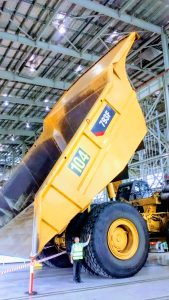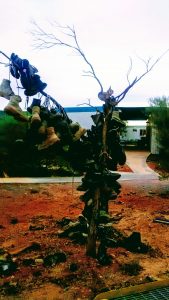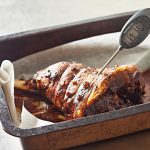
I often get asked what catering at remote mine sites is like. Having visited and worked at several mine sites around Australia, I thought I’d share some of my experiences and photographs. The photograph above is of the plane I flew in and out of to a gold mine in South Australia a while ago, no high tech airport here!
Firstly, the perception – if there still is one – about remote mine sites being blokey, rough and ready is a thing of the past. Every aspect of these operations, in my experience, is professional, safety-focused, and well managed.
Due to the remote location of many mines, the work style in most cases is FIFO (fly-in, fly-out) meaning workers are flown in and live and work at the mine for a set period. This period is called a swing, which varies, but is generally for two weeks. The workers are then flown home for a one week break before returning for their next swing. Meals, accommodation, entertainment facilities, WiFi, and a gym are all provided for mineworkers (usually called residents) and support staff including the catering team.

Mine Site Food
The catering operation revolves around a dining hall or what is often called a dry mess. This includes a commercial kitchen with extensive food storage facilities, a food servery and a dining area. This style of catering is based on a residential model and provides five meals a day, every day of the year.
Interestingly, remote mine sites have to hold up to 3 weeks par levels of food stock. This acts as a buffer against inclement weather and supplies not being able to be delivered. This generally means the kitchens storage facilities are far more extensive than one you might find in an equally sized urban kitchen operation.
When it comes to supplier deliveries, a site receives only one combined delivery per week which is brought in by truck. It is vital not to forget to order anything as it will be another week before it can be delivered.
Breakfast is eaten in the dining room and includes full English and continental options. Morning tea, lunch, and afternoon tea is eaten at the mine site (workplace). It is selected and packed up by each resident in a separate area of the food servery called the crib.
The menu offered here is extensive and includes make your own sandwiches, plus salads, sliced meats, chilled meals, cakes, and fresh fruit. At dinner, there is a selection of self-serve main courses, often including a roasted meat, braised (wet) dish, a vegetarian and a healthy option. These are accompanied by soup, a bread selection, a range of vegetable and potato/rice side dishes, hot and chilled desserts, ice cream and fresh fruit. Nobody goes hungry! Additionally, if none of the offered main course dishes appeal, a resident can usually order a steak, chicken breast or fish fillet that is cooked to order for them.
Working at a Mine Site
Working at a mine site, can be rewarding both professionally and financially. It allows for extended periods off work to do the things you enjoy. Still, it is worth considering how being away from home, your family and friends for long periods may affect you and your relationships. Additionally, the locations of some of these mine sites are extremely remote. It can prove to be quite challenging when you realise how far away many of the things we take for granted are, such as your local chemist, or a coffee from your favourite cafe.
A few of the older mine sites still follow the tradition of hanging up their work boots on a boot tree (see photograph) when you resign and leave for the last time, which I think is a wonderful tradition. I have been lucky enough to see one or two on my travels. Oh, and that is me standing next to the truck!
Cheers
Sean Anderson
Founder and Lead – Culinary


